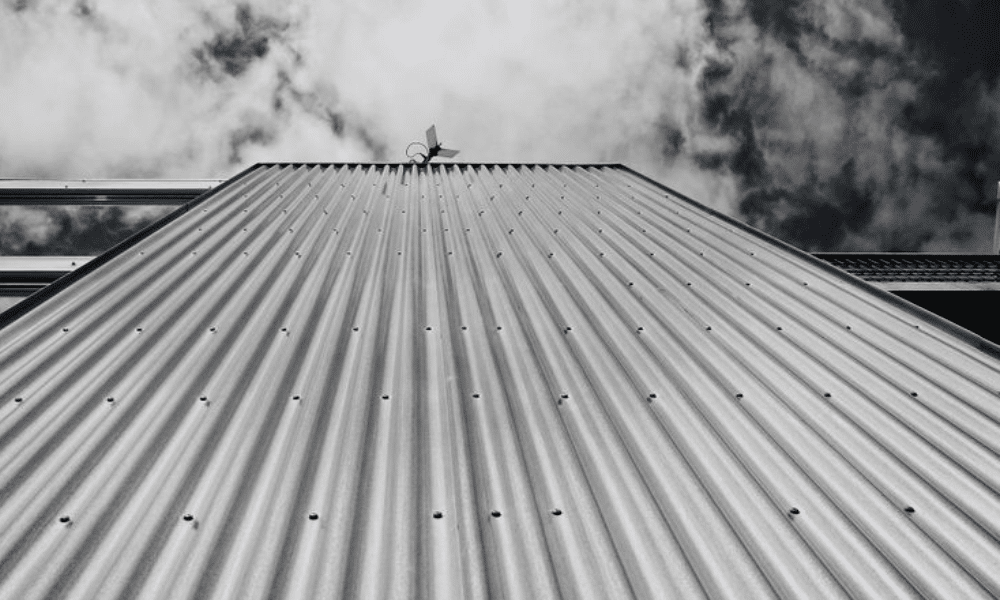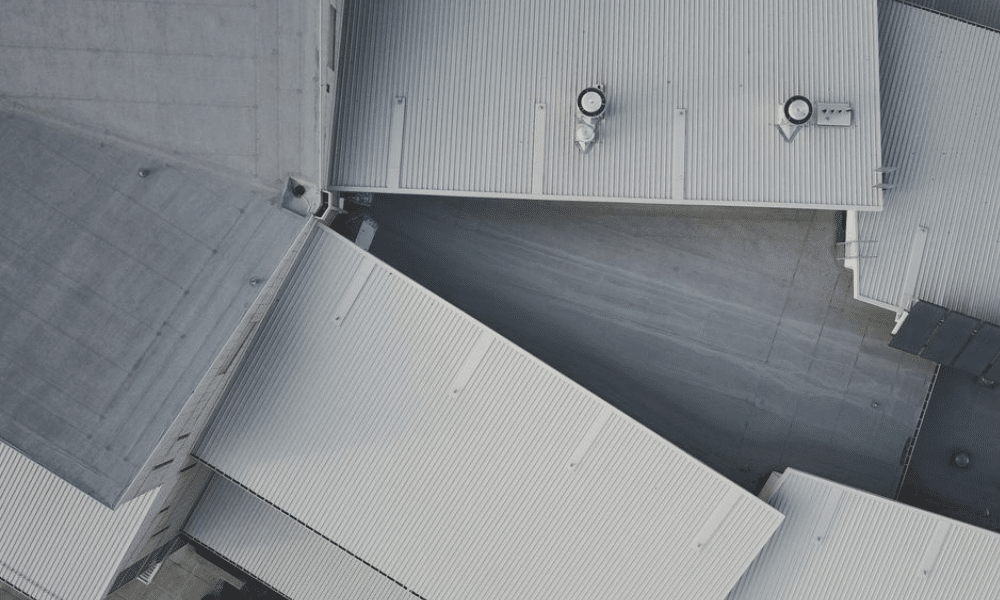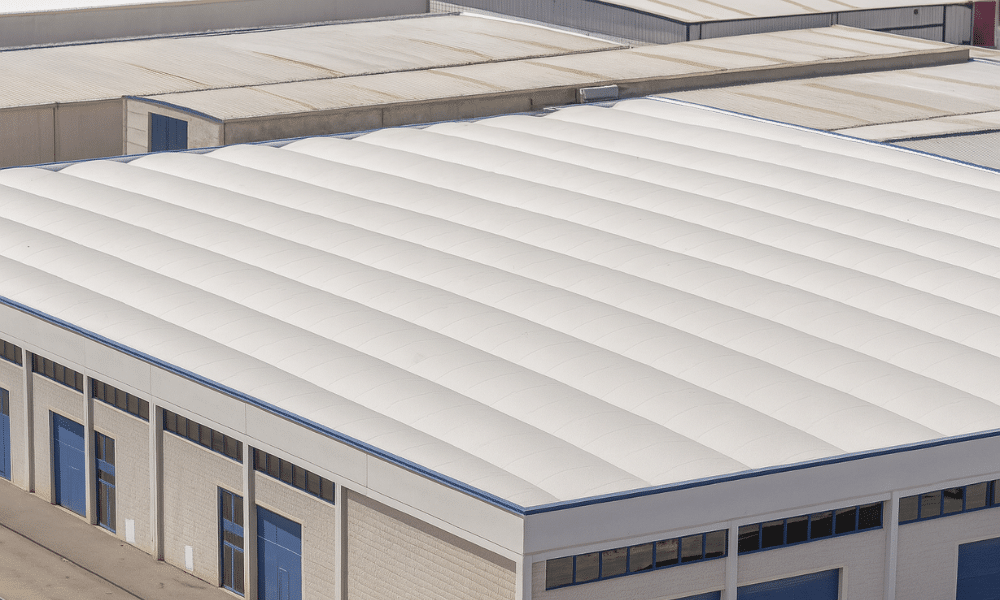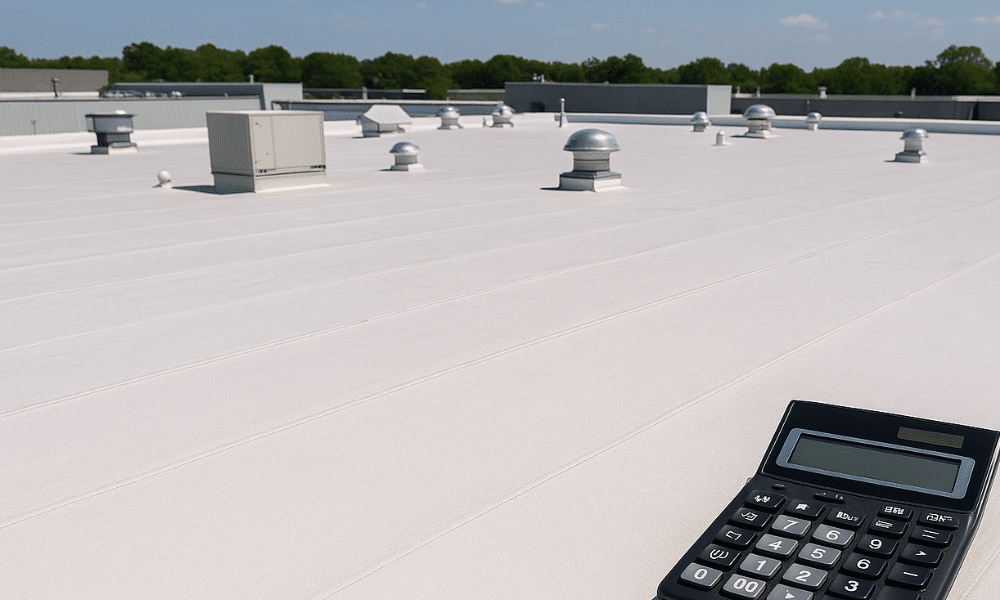
Summary Highlights:
- Hail can cause dents, punctures, membrane tears, and insulation compromise in metal and TPO roofs.
- Immediate inspection is critical—even minor-looking hail impacts can lead to costly long-term damage.
- Proper documentation helps you file a strong insurance claim and get full coverage.
- WaterTight Roofing provides fast, expert inspections and roof restoration for hail-impacted commercial buildings.
How Does Hail Damage Commercial Roofing Systems Like TPO and Metal?
As a commercial roofing professional, I've seen firsthand how destructive a fast-moving hailstorm can be to even the toughest roofing systems. Metal and TPO are two of Texas's most common commercial roof types, especially on warehouses, distribution centers, retail stores, and agricultural facilities. While they're durable, they're not immune. The damage might not always be obvious when hail hits, but it can be serious.
TPO (thermoplastic polyolefin) roofing is a flexible single-ply membrane. It's great at reflecting heat and providing energy efficiency, but hail can cause soft spots, punctures, or membrane bruising, especially if the insulation underneath is compromised.
Metal roofs, on the other hand, tend to dent or deform. While small dents might seem cosmetic, repeated impacts can weaken fasteners, seams, and protective coatings, leading to leaks and rust if left unchecked.
What Are the Signs of Hail Damage on a Metal or TPO Roof?
After a storm, I always advise commercial building owners to look for these warning signs:
- Dents along ridges, fasteners, or seams on standing seam or R-panel metal roofs
- Circular cracks, blisters, or soft spots on TPO membranes
- Granule loss on older coatings or UV films
- Tears, punctures, or wrinkling in areas with hail impact
- Water stains or ceiling spots inside the building
- Displaced rooftop equipment or scuppers indicating hail and wind impact
Even if you don't notice leaks immediately, hidden damage can degrade your roof. That's why we recommend a professional hail damage roof inspection within 24–72 hours after a storm hits your area.
What Should You Do Right After a Hailstorm?
Here's a simple post-storm action plan we follow at WaterTight Roofing:
Document visible damage: If it's safe to do so, take pictures of any hail accumulation, dents, or fallen debris from the ground.
Check the interior: Look at ceilings, walls, and light fixtures for water intrusion.
Call a commercial roofing contractor: You'll want a thorough, professional inspection, especially if you have a TPO system where damage might not be immediately visible.
Avoid DIY repairs: Using temporary sealants or walking on a damaged roof can worsen the problem or invalidate your insurance claim.
Notify your insurance company: We'll help you prepare all documentation needed for the claim process, including inspection reports, photos, and repair estimates.
Can Hail Damage Be Repaired—or Does the Roof Need Replacement?
At WaterTight Roofing, we always aim to restore before replacing. When it comes to storm-damaged roofs—especially on flat systems like those found on agricultural buildings—timely inspection is key. Storms affect flat roofs on agrarian buildings by compromising drainage, puncturing membranes, and weakening insulation, which can quietly impact structural integrity and daily operations.
For TPO roofs, we can often patch hail punctures, re-weld seams, or apply reinforced membrane coatings to restore waterproofing. Depending on the severity of the damage, repairs on metal roofing systems may include dent remediation, fastener re-tightening, or reapplying protective coatings.
However, we'll walk you through a full replacement plan if the hail has compromised the insulation layer, underlayment, or drainage slope—common issues in flat agricultural roofing. We also assist with insurance coordination and can often offer manufacturer-backed extended warranties for added peace of mind.
Has Your Roof Faced a Hailstorm?
Hail can leave behind serious damage—especially to metal and TPO roofing systems—even if it's not immediately visible. Don't wait for costly leaks or insurance complications to surface later.
Call WaterTight Roofing at 888-809-9976 to schedule your FREE, no-obligation roof inspection. Our expert team will assess your roof's condition, document any hail impact, and provide clear next steps to restore protection and performance. Your business deserves reliable defense against the elements—and we're here to make sure you have it. Act now before minor damage turns into a major disruption.
FAQs About Commercial Roofing Inspection
Blog subscribers get new resources and how-to guides delivered via email.
Your Business Relies On Staying Dry





